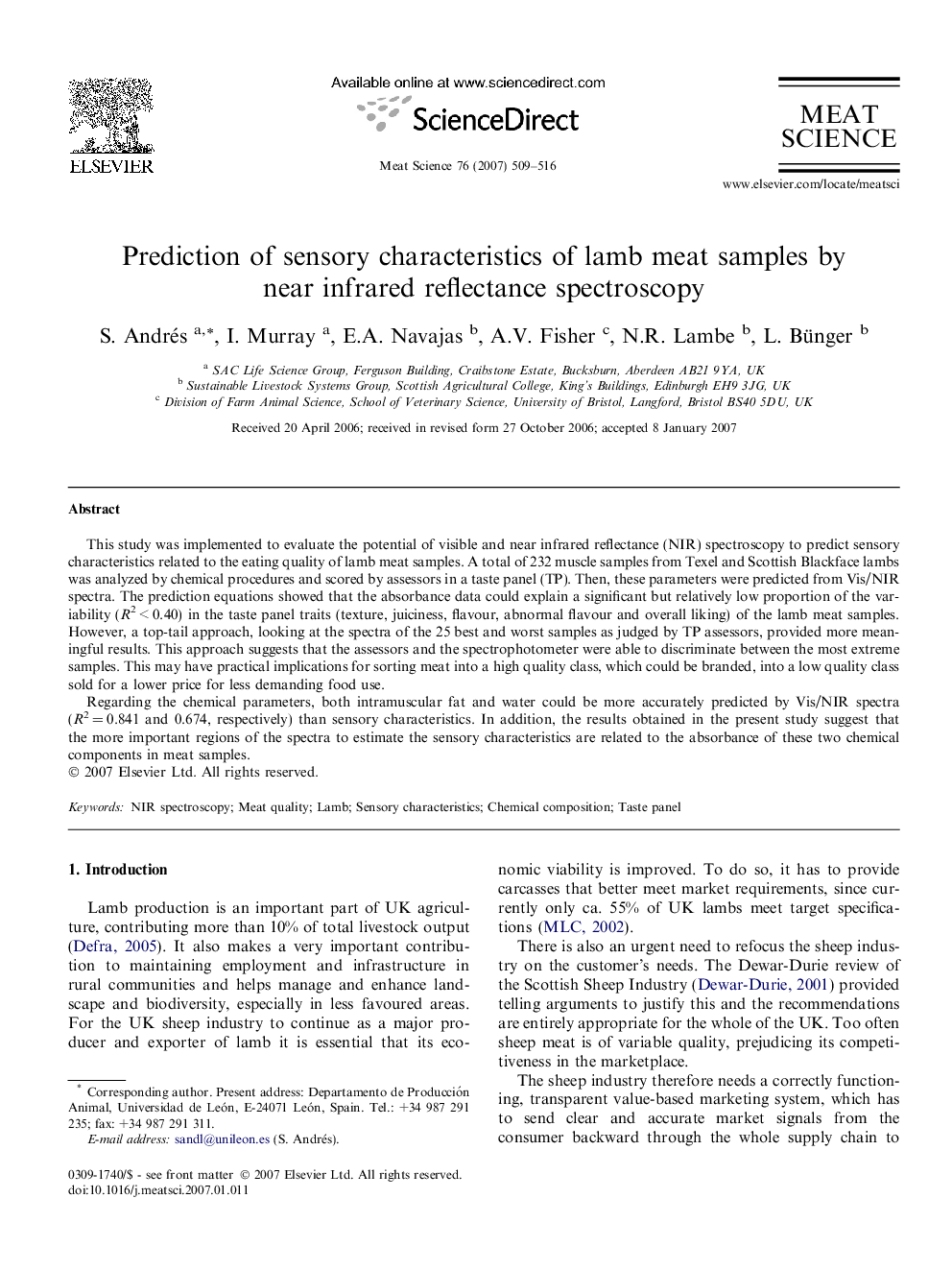| Article ID | Journal | Published Year | Pages | File Type |
|---|---|---|---|---|
| 2452022 | Meat Science | 2007 | 8 Pages |
This study was implemented to evaluate the potential of visible and near infrared reflectance (NIR) spectroscopy to predict sensory characteristics related to the eating quality of lamb meat samples. A total of 232 muscle samples from Texel and Scottish Blackface lambs was analyzed by chemical procedures and scored by assessors in a taste panel (TP). Then, these parameters were predicted from Vis/NIR spectra. The prediction equations showed that the absorbance data could explain a significant but relatively low proportion of the variability (R2 < 0.40) in the taste panel traits (texture, juiciness, flavour, abnormal flavour and overall liking) of the lamb meat samples. However, a top-tail approach, looking at the spectra of the 25 best and worst samples as judged by TP assessors, provided more meaningful results. This approach suggests that the assessors and the spectrophotometer were able to discriminate between the most extreme samples. This may have practical implications for sorting meat into a high quality class, which could be branded, into a low quality class sold for a lower price for less demanding food use.Regarding the chemical parameters, both intramuscular fat and water could be more accurately predicted by Vis/NIR spectra (R2 = 0.841 and 0.674, respectively) than sensory characteristics. In addition, the results obtained in the present study suggest that the more important regions of the spectra to estimate the sensory characteristics are related to the absorbance of these two chemical components in meat samples.
